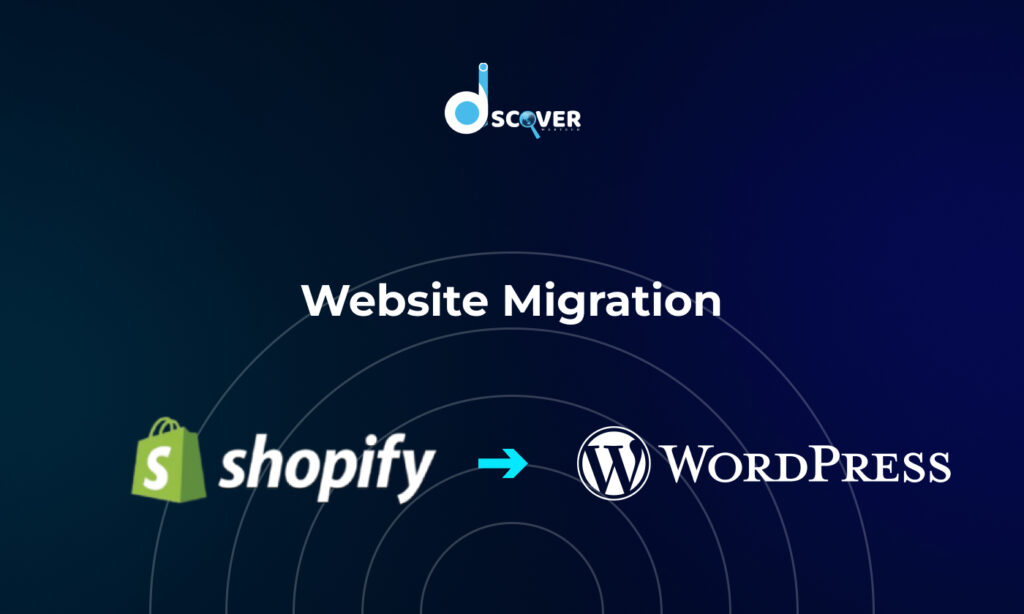
Switching from Shopify to WordPress can be a great move for many online businesses. Moving from Shopify to WordPress offers more flexibility and powerful options for managing your site. While Shopify is easy to set up, WordPress lets you customize more, improve your SEO, and use many plugins for added features. People often choose WordPress for its flexibility, lower costs over time, and greater ability to personalize their sites. This change allows you to make the most of WordPress’s capabilities, which is why it’s a popular choice for those wanting more control and customization for their online presence.
Preparing for the Migration
Getting ready to switch from Shopify involves a few important steps. First, you need to back up your Shopify store, which means saving all your data, products, and customer info. This backup is like an insurance policy if something goes wrong during the switch. Next, pick a good WordPress hosting provider that offers good performance, security, and support. After that, install WordPress and set up your new site, making sure you have all the necessary plugins and themes ready.
- Backup Your Shopify Store
- Save all your data including products, orders, and customer info.
- Keep your backup files in a safe place.
- Choose a WordPress Hosting Provider
- Find a hosting provider that fits your needs.
- Set up your hosting account and get ready for WordPress.
Planning the Migration Process
Planning to move from Shopify to WordPress needs some steps to make sure everything goes smoothly. First, map your Shopify store content to WordPress. This means figuring out how your products, pages, and customer data will transfer to the new platform. Next, look at the themes and plugins available for WordPress to find the best ones for your store’s needs and style. This helps keep your site’s functionality and look. Finally, set a migration timeline. Plan each step of the migration, give each task enough time, and decide when you want the new site to be ready. By planning these steps carefully, the Shopify to WordPress transition can be managed well, ensuring a smooth move to your new platform.
Migrating Content from Shopify to WordPress
Moving your content from Shopify to WordPress can be made simple with these steps. First, export your Shopify data like products, orders, and customers. Use Shopify’s export feature to download your data as CSV files. Once you have your data, you can import it into WordPress. You can use plugins like “WP All Import” to make this process easier, or you can manually upload your files and make sure everything is set up correctly. Lastly, don’t forget to move your blog posts and media files. You might need extra plugins or manual uploads to get everything into WordPress just right.
- Exporting Shopify Data (Products, Orders, Customers)
- Use Shopify’s export feature to save your data as CSV files.
- Make sure you have all the important details, like product info and customer data.
- Importing Data into WordPress (Using Plugins or Manual Methods)
- Use plugins like “WP All Import” for a smoother process.
- If you prefer, manually upload your CSV files and organize them in WordPress.
Recreating Your Website Design on WordPress
When moving from Shopify to WordPress, making sure your website design looks great is important. Start by picking a WordPress theme that fits your brand’s style or customize an existing one to match what you had before. This will help keep the same look and feel of your old site. Next, adjust the layout and content to make sure everything works well with WordPress. This might mean changing page structures, moving elements around, and checking that all features work correctly. By carefully planning these steps, you can make the Shopify to WordPress switch smooth and keep your site looking good and working well.
Setting Up WordPress E-Commerce Features
Setting up e-commerce features on WordPress is key to running your online store. Start by installing and setting up WooCommerce, a plugin that turns your WordPress site into a shop. This includes adding products and configuring settings. Next, set up payment options, shipping, and taxes. Choose how you want to get paid, such as PayPal or credit cards, and set up shipping methods and tax settings to comply with local rules. Import your product data and manage your stock to keep track of what you have.
- Installing and Configuring WooCommerce
- Install the WooCommerce plugin from the WordPress plugin directory.
- Follow the setup wizard to add your store’s details, currency, and payment methods.
- Setting Up Payment Gateways, Shipping, and Taxes
- Select and set up payment options like PayPal or Stripe.
- Configure your shipping options, such as flat rate or free shipping.
- Set up tax settings to meet local regulations.
Testing Your New WordPress Website
Testing your new WordPress website after moving from Shopify to WordPress is important to make sure everything works well. Start by checking your product pages and orders. Ensure all products are displayed correctly with the right descriptions, prices, and images. Verify that the order process works smoothly, from adding items to the cart to completing the purchase. Next, test the checkout process. Make sure all payment options are working and customers can easily enter their information and complete transactions without problems. Lastly, ensure your site is mobile-friendly. Test your website on different devices to confirm it looks good and functions properly on smartphones and tablets. By doing these tests, you can ensure a seamless experience for your users on your new platform.
Final Thoughts
To sum up, moving from Shopify to WordPress requires several important steps to make sure everything goes smoothly. First, back up your Shopify data and choose a good WordPress hosting provider. Next, map your Shopify content to WordPress, select the right themes and plugins, and set a clear timeline for the migration. During the migration, make sure to export and import your data correctly, recreate your website design, and set up e-commerce features like WooCommerce. Finally, test your new WordPress site thoroughly to ensure everything works well. If you’re unsure about handling any technical steps, consulting a development expert can help you avoid common pitfalls and ensure a seamless transition. For a successful switch from Shopify to WordPress, pay attention to details, ensure your data is accurate, and follow a clear plan. These steps will help you manage the migration smoothly and enjoy the benefits of your new platform.
Frequently Asked Questions (FAQ’s)
How do I migrate from Shopify to WordPress?
To migrate from Shopify to WordPress, you’ll need to export your Shopify store data (products, customers, orders) and import it into WordPress using a plugin like “FG Shopify to WooCommerce.” After that, set up your WordPress site with WooCommerce and adjust your theme and design as needed.
What are the benefits of moving Shopify to WordPress?
Moving from Shopify to WordPress gives you more control over customization, allowing you to use a wide range of themes and plugins. You also benefit from lower long-term costs and better SEO capabilities with WordPress and WooCommerce.
Why move from Shopify to WordPress?
Moving from Shopify to WordPress gives you more control over customization, allowing you to use a wide range of themes and plugins. You also benefit from lower long-term costs and better SEO capabilities with WordPress and WooCommerce.
Why WordPress is better than Shopify?
When comparing flexibility, WordPress offers much more than Shopify. It’s been around longer and is more popular, which means you have access to a wider variety of templates, themes, plugins, and integrations than Shopify provides.
Do Shopify themes work on WordPress?
The main difference between the two platforms is the programming languages they use. Shopify uses Liquid, while WordPress uses PHP. Because of this, you can’t automatically convert a theme from Shopify to WordPress or vice versa.


